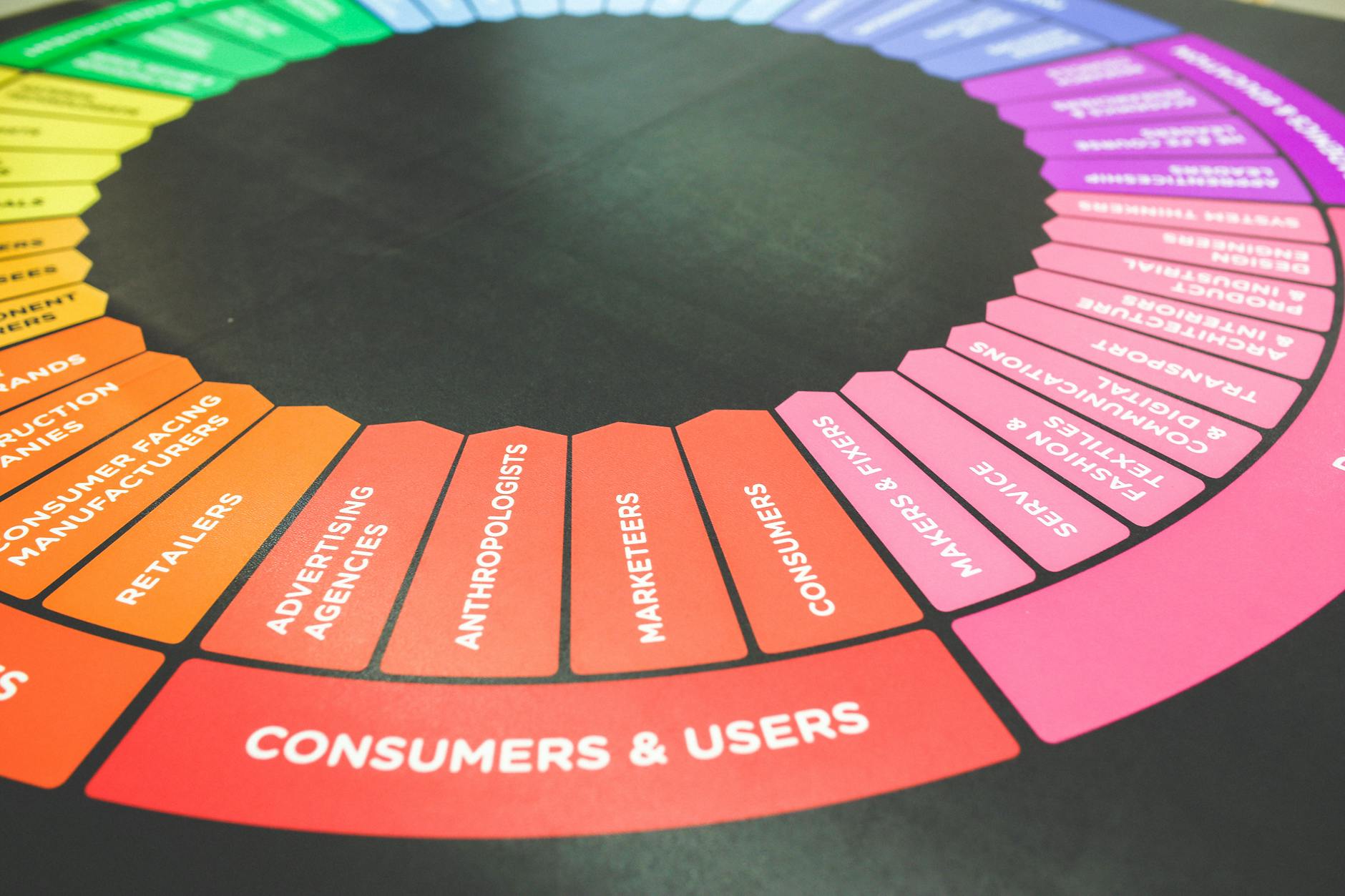LinkedIn Ads: Are They Really Worth the Investment for Your Business?
LinkedIn Ads: Are They Really Worth the Investment for Your Business?
LinkedIn has emerged as a powerful platform for businesses aiming to reach professionals and decision-makers. But the big question is: are LinkedIn Ads truly worth the investment? This post sets out to evaluate their effectiveness for businesses of all sizes.
You'll discover how LinkedIn’s unique audience can provide valuable leads and meaningful engagement. We’ll take a close look at the benefits and downsides of investing in these ads. By the end, you’ll be equipped to decide if LinkedIn Ads fit your marketing strategy.
Whether you're a small business or an established enterprise, understanding the potential of LinkedIn Ads could make a significant difference in your advertising approach. So, let’s get started and see if it makes sense for your business.
For further insights, check out this YouTube video on LinkedIn Ads that discusses their effectiveness.
Understanding LinkedIn Ads
LinkedIn Ads provide a means for businesses to engage with a unique audience of professionals and decision-makers. This platform allows for targeted advertising that can help you reach specific segments based on various criteria. Let’s break down the key aspects of LinkedIn Ads, including the different types available and the advanced targeting options that can amplify your campaigns.
Types of LinkedIn Ads
LinkedIn offers several types of ads to cater to diverse marketing goals. Understanding these options can help you choose the right format for your business:
-
Sponsored Content: This type features posts that appear in the LinkedIn feed, much like a regular update. They’re designed to blend with organic content, making them less intrusive while still engaging users. You can use text, images, or video in your Sponsored Content.
-
InMail Ads: If you aim to send personalized messages directly to users' LinkedIn inboxes, InMail ads are your best bet. This format allows for a more tailored approach, enabling you to connect with leads directly. You could include special offers or insights tailored to a specific audience.
-
Text Ads: These appear in the sidebar and consist of a short, engaging copy with a headline and a small image. They’re cost-effective and easy to set up, ideal for boosting brand visibility.
-
Video Ads: Capturing attention through dynamic content, Video Ads allow you to showcase your brand or product stories visually. These ads occupy a prominent space within users' feeds, promising higher engagement rates.
Each of these ad types serves specific needs, making it crucial to choose the right one based on your marketing objectives. For a deeper understanding of these options, check this complete guide on LinkedIn Ads.
Targeting Options
LinkedIn Ads stand out due to their advanced targeting features, allowing you to reach the right audience effectively. Here’s how you can optimize your targeting:
-
Demographic Targeting: This allows you to segment users based on criteria like age, gender, and location. By understanding your market, you can tailor ads that resonate with specific demographics.
-
Job Titles: Targeting specific job titles enables you to reach decision-makers and influencers directly relevant to your business. For example, if you offer B2B services, focus on executives, managers, and relevant professionals.
-
Industries: Within LinkedIn's framework, businesses can filter audiences by industry type. This targeting can help you hone in on niche markets that are likely to convert.
-
Company Size: Understanding whether your ideal customer works for small businesses or large corporations will guide your targeting approach. LinkedIn allows targeting based on company size, ensuring you reach the right audience set.
Integrating these targeting options into your campaigns can substantially enhance their effectiveness. For additional insights on best practices for your ad targeting strategy, check out this LinkedIn marketing solutions link.

Photo by Shantanu Kumar
By understanding the different types of LinkedIn Ads and utilizing advanced targeting options, your campaigns are more likely to reach the intended audience effectively, increasing your chances of achieving your business objectives.
Benefits of Using LinkedIn Ads
LinkedIn Ads provide unique marketing advantages, especially for businesses targeting professionals. Understanding these benefits helps clarify why investing in LinkedIn advertising can pay off.
Higher Quality Leads
LinkedIn boasts a professional user base unlike any other social platform. This environment makes it easier to attract highly qualified leads. When you run an ad on LinkedIn, you access decision-makers, industry leaders, and skilled professionals who are actively looking to engage with relevant brands. By narrowing your focus to this audience, you create opportunities for meaningful connections and increase your chances of converting leads into customers.
Consider this: 65% of B2B marketers say that LinkedIn is the most effective platform for generating high-quality leads. These leads often result in better long-term relationships and higher conversion rates, making your marketing efforts more worthwhile. To dive deeper into the quality of leads on LinkedIn, check out this article on lead generation.
Brand Visibility and Reputation
Using LinkedIn Ads can significantly enhance your brand visibility among a professional crowd. The platform reaches over 850 million users globally, providing ample opportunity for your brand to stand out. Running targeted campaigns not only disseminates your message but also positions your brand as a thought leader within your industry.
Brand visibility fosters credibility. As professionals encounter your brand consistently, they begin to recognize and trust it. A well-crafted LinkedIn Ads strategy boosts your reputation by aligning your brand with quality content and professional insights. Understanding how visibility influences your audience is crucial; this resource on boosting brand awareness through LinkedIn can enhance your efforts.
B2B Marketing Effectiveness
For businesses targeting other businesses, LinkedIn is unmatched. Its unique platform is built for professionals, transforming it into a powerful tool for B2B marketing. A recent study shows that 80% of B2B leads come from LinkedIn. Ads are designed for precise targeting, meaning you can reach specific businesses or roles that matter most to you.
By using LinkedIn Ads, you can promote your products or services directly to decision-makers. This results in a higher return on investment (ROI) for your marketing budget. Additionally, LinkedIn provides analytics to track the performance of your ads, helping you fine-tune your strategy for even better results. Learn more about effective tactics for B2B marketing on LinkedIn in this insightful article.

Photo by Magnus Mueller
Utilizing LinkedIn Ads can bring about numerous advantages, significantly impacting how your business engages with its target audience. From generating quality leads to enhancing brand reputation, the platform is a pivotal element in effective B2B marketing strategies.
Challenges and Drawbacks of LinkedIn Ads
While LinkedIn Ads offer effective opportunities for targeting professionals, they come with their own set of challenges. Understanding these difficulties can help you navigate your advertising strategy better.
Cost Considerations
Cost is a significant factor when considering LinkedIn Ads. Though the platform offers precise targeting tools, the expenses can climb quickly.
-
Cost per lead (CPL): LinkedIn advertising generally induces higher CPL compared to other platforms, like Facebook or Google Ads. Reports indicate that businesses might spend around $5.01 to $8 per 1000 impressions and typically experience a cost per click (CPC) of $2-$3. For detailed insights, refer to WebFX for a clear breakdown of LinkedIn advertising pricing in 2024.
-
Cost per acquisition (CPA): Another important metric, CPA provides insights into the overall expenditure to convert a lead into a customer. LinkedIn's costs can lead to challenges in ROI calculations, particularly for businesses on a tight budget. The analysis from Powered by Search details the importance of LinkedIn’s conversion tracking tool, which can help in lowering the overall CPA.
Ultimately, if your budget is limited, you may find other platforms yield better returns for your advertising spend.
Management Complexity
Running LinkedIn Ads is not as straightforward as it might seem. There's a learning curve associated with effectively managing your campaigns.
-
Targeting nuances: LinkedIn's targeting features, while powerful, can become overwhelming. It requires a good understanding of your audience to fine-tune and maximize results. Finding the right mix of targeting options without spreading your focus too thin can be tricky. Mfg Tribe outlines common issues like incorrect target demographics that lead to wasted budgets.
-
Performance monitoring: Keeping track of ad performance is another challenge. With metrics scattered across different analytics tools, it's easy to overlook critical data that could inform your adjustments. The need to continually optimize campaigns based on performance metrics adds to the complexity. Solutions for these challenges are discussed in this LinkedIn article.
In short, managing LinkedIn Ads effectively requires time, effort, and a solid strategy, making it a demanding option for many audiences.

Photo by Anna Tarazevich
Evaluating ROI from LinkedIn Ads
Measuring the return on investment (ROI) from your LinkedIn Ads involves a systematic approach. Successful campaigns start by understanding what you want to achieve and how to analyze performance effectively. Let's explore two key components: setting clear objectives and utilizing analytics tools.
Setting Clear Objectives
Setting specific goals for your LinkedIn Ad campaigns is essential. Without clear objectives, measuring ROI becomes challenging. Start by defining what success looks like for your business. Here are some common objectives to consider:
- Lead Generation: Aim to collect contact information from potential customers.
- Brand Awareness: Focus on increasing the visibility of your company and its offerings.
- Conversions: Target sales or actions that demonstrate user engagement, like downloading a resource or signing up for a newsletter.
By quantifying your objectives, you can establish relevant metrics. For instance, if your goal is lead generation, track metrics such as the number of leads acquired and the cost per lead. This structured approach enables you to assess the effectiveness of each campaign and refine strategies to meet your targets. To get more tips on how to set the right objectives, refer to this guide on ROI analysis.
Using Analytics Tools
Once you've set your goals, it's crucial to track campaign performance using available analytics tools. LinkedIn offers several options to help you monitor metrics effectively:
-
Campaign Manager: This is LinkedIn's built-in tool for managing ad campaigns. It provides insights into impressions, clicks, and conversions. You can analyze which ads perform well and adjust your strategies accordingly.
-
Conversion Tracking: This feature allows you to monitor the actions taken by users after interacting with your ads. Measuring conversions helps assess the effectiveness of your campaigns in driving specific actions (e.g., filling out a form or making a purchase).
Consider reviewing metrics like:
- Cost per Thousand Impressions (CPM): This helps evaluate how much you’re spending for ad visibility.
- Cost per Lead (CPL): A critical metric that determines how cost-effective your campaigns are in acquiring leads.
- Lead Quality: Assessing the conversion rate of leads into paying customers can give a better idea of the profitability of your investment.
By integrating these metrics into your analysis, you gain a comprehensive understanding of ROI. Interested in exploring which metrics matter most? Check out this article on LinkedIn Ads metrics.

Photo by Kindel Media
In summary, evaluating the ROI from LinkedIn Ads requires a balance of setting clear objectives and using the right analytics tools. Establish what success means for you and how you can measure it effectively. This approach will ensure your advertising efforts yield the best results possible.
Case Studies: Success Stories and Failures
To truly grasp the impact of LinkedIn Ads, we'll look at both successful campaigns and those that did not meet expectations. These examples offer valuable lessons that can shape your advertising strategy.
Successful Campaigns: Detail successful LinkedIn advertising campaigns and what made them work.
Many businesses have thrived using LinkedIn Ads. Here are some noteworthy successes that can inspire your marketing approach:
-
HubSpot: Utilizing targeted Sponsored Content, HubSpot captured attention with educational and actionable content tailored to specific audience segments. Their focus on delivering value led to increased engagement and substantial lead generation. Understand more about their methods in this LinkedIn marketing success page.
-
Salesforce: Salesforce ran a campaign targeting specific industries, showcasing their CRM solutions. They combined eye-catching visuals with industry-relevant messaging, which resulted in impressive conversion rates. This campaign emphasized how personalized content resonates well with LinkedIn's workforce audience. Explore more successful LinkedIn campaigns like this detailed case study here.
-
Cisco: Through engaging video ads, Cisco attracted a tech-savvy audience. Their visuals highlighted product features and educational content to draw in viewers. The clear call to action further encouraged users to learn more, boosting their overall conversions significantly. Further insights about video campaigns can be found in this comprehensive guide at Flow20.
These campaigns showcase effective strategies like tailored content and a focus on value—all essential elements in successful LinkedIn Ad initiatives.
Lessons from Failures: Analyze unsuccessful campaigns and the lessons learned from them.
Not every LinkedIn Ad campaign achieves its goals. Analyzing these failures helps you avoid similar pitfalls. Here are a few case studies that highlight common mistakes:
-
LinkedIn Campaign for Product Launch: A startup launched a product with high expectations but failed to precisely target its audience. The ads reached individuals uninterested in their offerings, resulting in poor engagement. The lesson here is to invest time in understanding your target audience. You can read about this experience here.
-
Virtual Summit Promotion: A company planned a paid campaign to promote an online event but did not establish clear goals. The ad content was generic, resulting in low click-through rates. This showcases that targeting, clarity, and specificity are crucial. This company's story is detailed in a podcast discussing their lessons learned.
-
The Ford Edsel: While not strictly a LinkedIn campaign, the failure of the Ford Edsel highlights the consequences of ignoring market research. Launched without aligning to consumer needs, it became an infamous business blunder. This type of oversight serves as a broader lesson applicable to any advertising platform. More about this notable failure can be found in this case study.
These failed campaigns remind us that precision, clear strategies, and an understanding of your audience make a significant difference in advertising success.

Photo by Mikael Blomkvist
Conclusion
As we wrap up this exploration into LinkedIn Ads, it's essential to evaluate whether they align with your business objectives. The decision to invest in them often depends on various factors, but here are a few pivotal insights to consider.
Assessing Value for Your Business
Remember that LinkedIn Ads provide a unique opportunity to reach a professional audience actively seeking relevant content. For businesses focused on B2B strategies, this platform excels at generating high-quality leads and boosting brand awareness. As highlighted in research, 65% of B2B marketers affirm LinkedIn as the most effective lead generation tool.
To see if the investment is worthwhile for you, think about your target audience and the specific goals you have for your ad campaigns. It's helpful to weigh the pros and cons before diving in. You can learn more about the benefits and drawbacks of LinkedIn advertising in this resource on LinkedIn Ads pros and cons.
Evaluating ROI
Calculating the ROI from LinkedIn advertising might feel daunting but is achievable with the right approach. By setting clear objectives—like lead generation or brand awareness—you can better assess the effectiveness of your ads. Utilize LinkedIn's Campaign Manager for real-time analytics to gauge performance metrics that align with your goals.
For insights on tracking ROI, check out this guide to maximizing marketing budgets. Simple calculations and clear goals can provide clarity on whether spending your budget here yields valuable returns.
Final Thoughts
Ultimately, deciding if LinkedIn Ads are worth it for you comes down to understanding your business needs and your willingness to invest time and resources in optimizing campaigns. If your target audience is indeed professionals, aiming for engagement through strategic advertising on LinkedIn could very well pay off.

Photo by Karolina Grabowska


